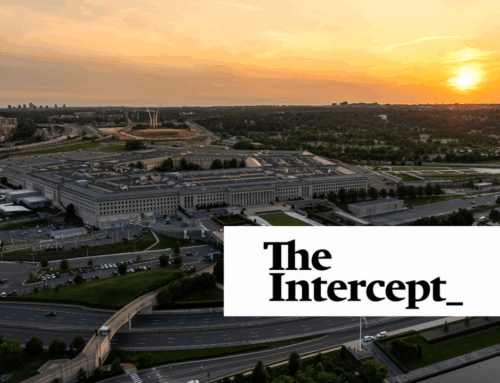It’s unbelievable and, yet, annoyingly true: Just 10 days after the release of the president’s budget, the Navy said it isn’t getting a big enough piece of the pie.
On Feb. 12, the Office of Management and Budget released the president’s budget request for fiscal year 2019. Included in that request was $686 billion for the Pentagon. And included in that was $194 billion for the Department of the Navy. This is a whopping 13 percent increase from the $171.5 request for fiscal year 2018.
These stratospheric numbers are part of the president’s much touted build-up of the military after the supposed, but largely unproven, decline in military readiness and capabilities. With this huge amount of money being spent on Pentagon programs, I figured there couldn’t possibly be anything the military services wanted that didn’t make it into the Pentagon’s budget request.
Well, that’s what I get for making assumptions.
On Feb. 22, the chief of naval operations sent the leadership of the House Armed Services Committee a letter with a list of unfunded priorities. At least, that’s what the military services used to call these “wish lists.” The latest moniker for the items on this list is, “unfunded contributors to naval power.” And the admiral identifies $1.5 billion worth. So in addition to the already massive funding the navy received, they are asking for an increase of less than 1 percent. With numbers this big, it is unbelievable that it is critical that the Navy get this bump up.
Let me provide a little history. Way back when (like, say, the 1980s) these lists were called “unfunded requirements” and were colloquially referred to as UFRs (“Yoofers”). These lists were the last refuge of industry lobbyists who were unable to get funding for a program into the actual Pentagon budget request. The military service would throw said contractor a bone and put the program on the unfunded list. The lobbyists for that corporation would then charge up to Capitol Hill with the list and try to convince a member of Congress to ask the Appropriations Committees to add money for the program.
This was common practice during the bad old days of earmarks. (My organization, Taxpayers for Common Sense, spent many, many hours researching earmarks and producing a database you can use to remind yourself of the mischief Congress used to get into this way.)
Then a former secretary of defense made the unilateral declaration that there was no such thing, in his Pentagon, as an unfunded requirement. All “requirements” must, necessarily, be funded. So, semantics won the day and the new phrase was unfunded “priority.” Then yet another secretary of defense killed the practice altogether and no such lists were produced by the military services for several years.
But, recently, the practice has recurred. Soon we’ll see the other military services follow the lead of the chief of naval operations and claim that they have identified programs that are “unfunded contributors” to that service’s power.
How does the Navy want to spend this additional $1.5 billion?
Of the programs Admiral John Richardson identifies in his letter to the committee, 12 are research and development programs totaling $253 million. (The list identifies a few programs funded by more than one pot of money. I’ll leave those out for the purposes of this write up.) The total Department of the Navy (which includes both the Navy and the Marine Corps) request for research and development in fiscal year 2019 is $18.8 billion. But, somehow, these 12 programs for a, relatively, small amount of money didn’t make it into the budget. Perhaps because they aren’t really necessary “contributors.”
Another 18 of the unfunded programs are procurement for a total of just over $1 billion. Again, the Navy’s overall procurement request was $58.5 billion, but that just wasn’t enough.
Finally, six operations and maintenance accounts are listed as needing more money. The grand total for these six programs is roughly $134 million but, somehow, the overall Department of the Navy request for operations and maintenance of $63.4 billion couldn’t fit them in.
Remember that this is just the Navy’s unfunded list. As I noted above, I have no doubt that the Marines, the Air Force and the Army also have these lists, but they haven’t yet been made public. Nothing in the Washington budget wars surprises me anymore, but I really didn’t expect the military services to have the chutzpah to argue that a budget of $686 billion for the Pentagon doesn’t adequately cover their needs.
Ten days after the release of the President’s budget request, and already the Pentagon is asking for more. Stay tuned.










